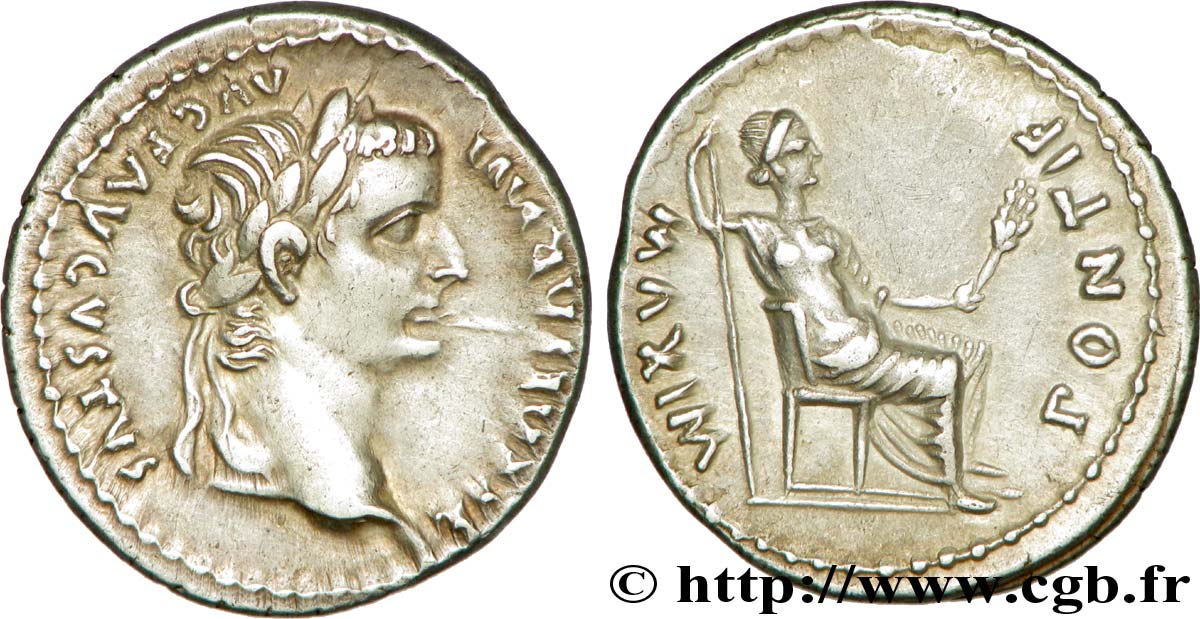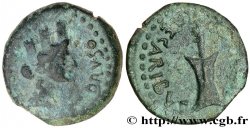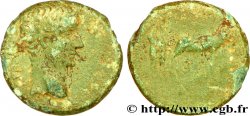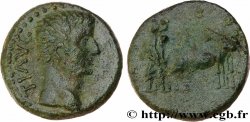v36_0363 - TIBERIO Denier
MONNAIES 36 (2008)
Начальная цена : 550.00 €
Назначить цену : 850.00 €
Цена реализации : 550.00 €
Количество ставок : 1
Максимальная предлагаемая цена : 710.00 €
Начальная цена : 550.00 €
Назначить цену : 850.00 €
Цена реализации : 550.00 €
Количество ставок : 1
Максимальная предлагаемая цена : 710.00 €
Тип Denier
Дата: c. 14-16
Монетный двор / Город: Gaule, Lyon
Металл: silver
Проба: 900 ‰
Диаметр: 19 mm
Ориентация осей монеты: 12 h.
Вес: 3,72 g.
Редкость: R1
Emission: 1er
Комментарии о состоянии
Exemplaire sur un petit flan, parfaitement centré des deux côtés avec les grènetis complets. Très beau portrait. Revers de style fin. Très jolie patine de médaillier avec des reflets mordorés
Ссылки в каталоге: :
C.16 (2 fr.) - RIC.26 - BMC/RE.34 - RSC.16 a - RCV.1763 (280$) - MRK.5 /4 (700€) - BN/R.16 - Giard/L1.144
Лицевая сторона
Аверс: легенда: TI CAESAR DIVI - AVG F AVGVSTVS.
Аверс: описание: Tête laurée de Tibère à droite (O*).
Аверс: перевод: “Tiberius Cæsar Divi Augusti Filius Augustus”, (Tibère César fils du divin Auguste, auguste).
Обратная сторона
Реверс: легенда: PONTIF - MAXIM.
Реверс: Описание: Pax (la Paix) ou Livie assise à droite sur un siège, tenant une branche d'olivier de la main gauche et de la droite un long sceptre ; double ligne d’exergue.
Реверс: перевод: “Pontifex Maximus”, (Grand pontife).
Комментарий
Rubans de type 3. Trace de cassure de coin devnt la bouche de Tibère. Comme pour le denier d'Auguste, cette pièce appartient à l'atelier impérial de Lyon et ce type de denier a circulé pendant pratiquement un siècle. Il se rencontre très souvent avec des monnaies gauloises de la phase terminale dans les fouilles archéologiques. C’est la monnaie romaine la plus courante en Gaule pour les Julio-Claudiens. La première émission se caractérise par un socle représenté par double ligne d’exergue et les pieds du siège sont lisses ; les pieds de Livie reposent directement sur le sol ; au droit, les rubans de la couronne de type 3 retombent en petites ondulations, le portrait est réaliste.
Type 3 ribbons. Trace of die breakage in front of Tiberius's mouth. As with the Augustan denarius, this coin belongs to the imperial mint of Lyon and this type of denarius circulated for almost a century. It is very often found with Gallic coins from the final phase in archaeological excavations. It is the most common Roman coin in Gaul for the Julio-Claudians. The first issue is characterized by a base represented by a double exergue line and the legs of the chair are smooth; Livia's feet rest directly on the ground; on the obverse, the ribbons of the type 3 crown fall in small undulations, the portrait is realistic
Type 3 ribbons. Trace of die breakage in front of Tiberius's mouth. As with the Augustan denarius, this coin belongs to the imperial mint of Lyon and this type of denarius circulated for almost a century. It is very often found with Gallic coins from the final phase in archaeological excavations. It is the most common Roman coin in Gaul for the Julio-Claudians. The first issue is characterized by a base represented by a double exergue line and the legs of the chair are smooth; Livia's feet rest directly on the ground; on the obverse, the ribbons of the type 3 crown fall in small undulations, the portrait is realistic








 Cообщить об ошибке
Cообщить об ошибке Распечатать страницу
Распечатать страницу Отправить мой выбор
Отправить мой выбор Задать вопрос
Задать вопрос Consign / sell
Consign / sell
 Информация
Информация










